Exploring the “lost city” of Petra, a walking safari in Zambia, a cruise to Antarctica: This isn’t your average trip. Take your family vacation to the next level with 25 destinations worthy of your bucket-list.
Santorini

If there were ever a place that could get by on its looks, it would be this Greek isle. Whitewashed cave houses framed by bougainvillea and backed by blue-domed churches spill down the rim of an ancient volcanic crater; at sunset, the Sea of Crete is bathed in a rosy glow. Santorini’s appeal also lies in its wealth of diversions: extraordinary wines, black- sand beaches, and archaeological sites like the Akrotíri settlement, often referred to as the “Minoan Pompeii.” Make your base Perivolas, in the village of Oia. Set within the alcoves of 300-year-old caves, the hotel’s 20 rooms have vaulted ceilings and cliff-side terraces. For a romantic dinner, the open-air balcony at Assyrtico Wine Restaurant, in a renovated 1960s mansion in Firá, overlooks the volcanic islands of Nea Kameni and Palea Kameni. Order the flaky pastry-wrapped saganaki (traditional fried cheese) with fig jam and wine from the local Argyros estate, then make your way back to Oia for a stroll along its nine-mile walkway.
Marrakesh
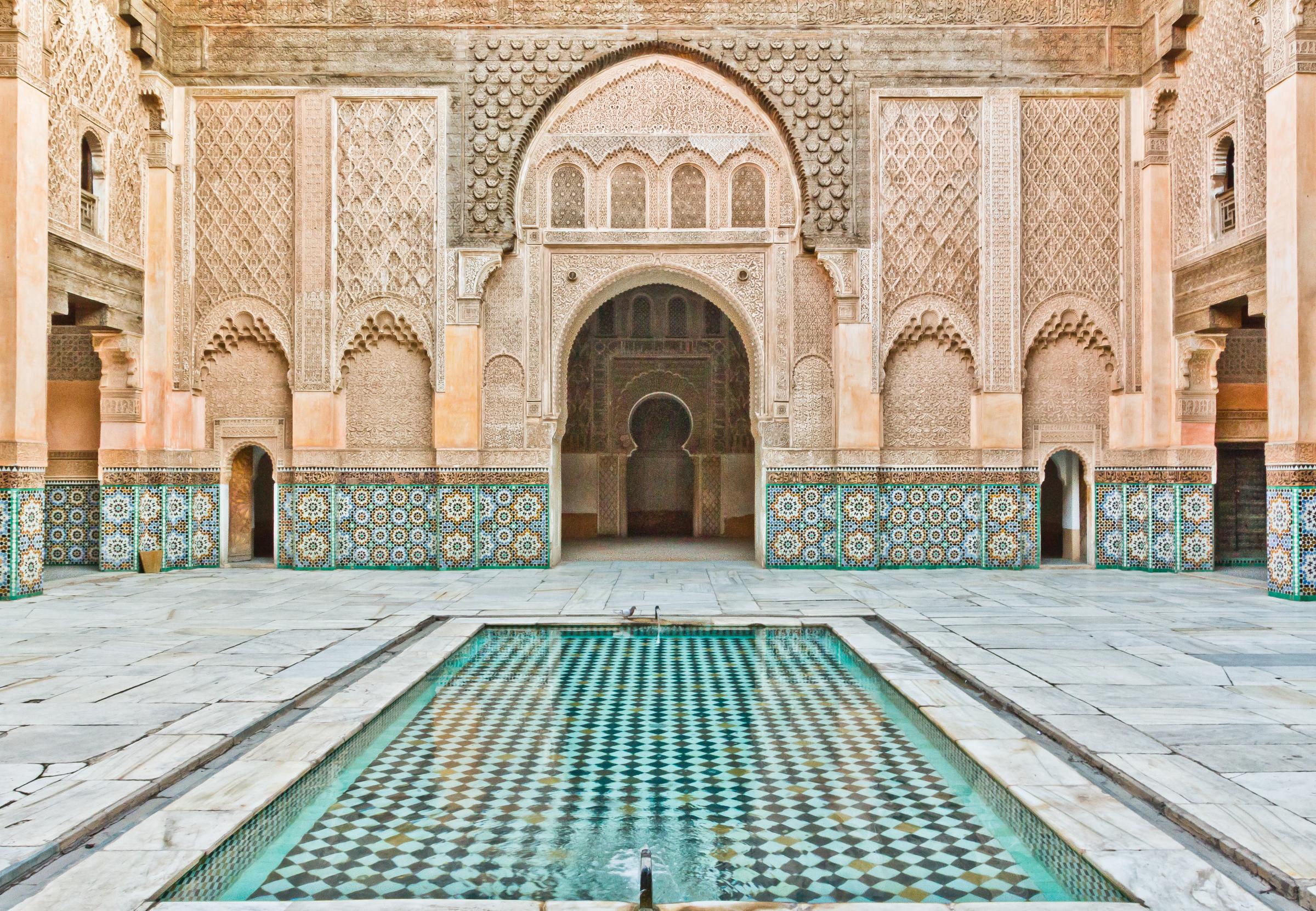
Over the past decade, the Red City has become Morocco’s style capital, with ever-more-luxurious hotels and shopping. Combine a stay at the Royal Mansour—a palatial, over-the-top resort (and the personal project of the king of Morocco)—with a few nights at the intimate El Fenn, a riad whose courtyard is filled with deep sofas and kilims. For contemporary design, the Guéliz district, with its wide boulevards, is a must-visit. Swing by Studio Lalla for boho handbags and jewelry by Parme Marin. Then, check out 33 Rue Majorelle, which is like a well-edited mini-souk. Browse the cups and plates by Chabi Chic and clothing by Noureddine Amir, then stop at the little café for juice and a salad.
Galápagos
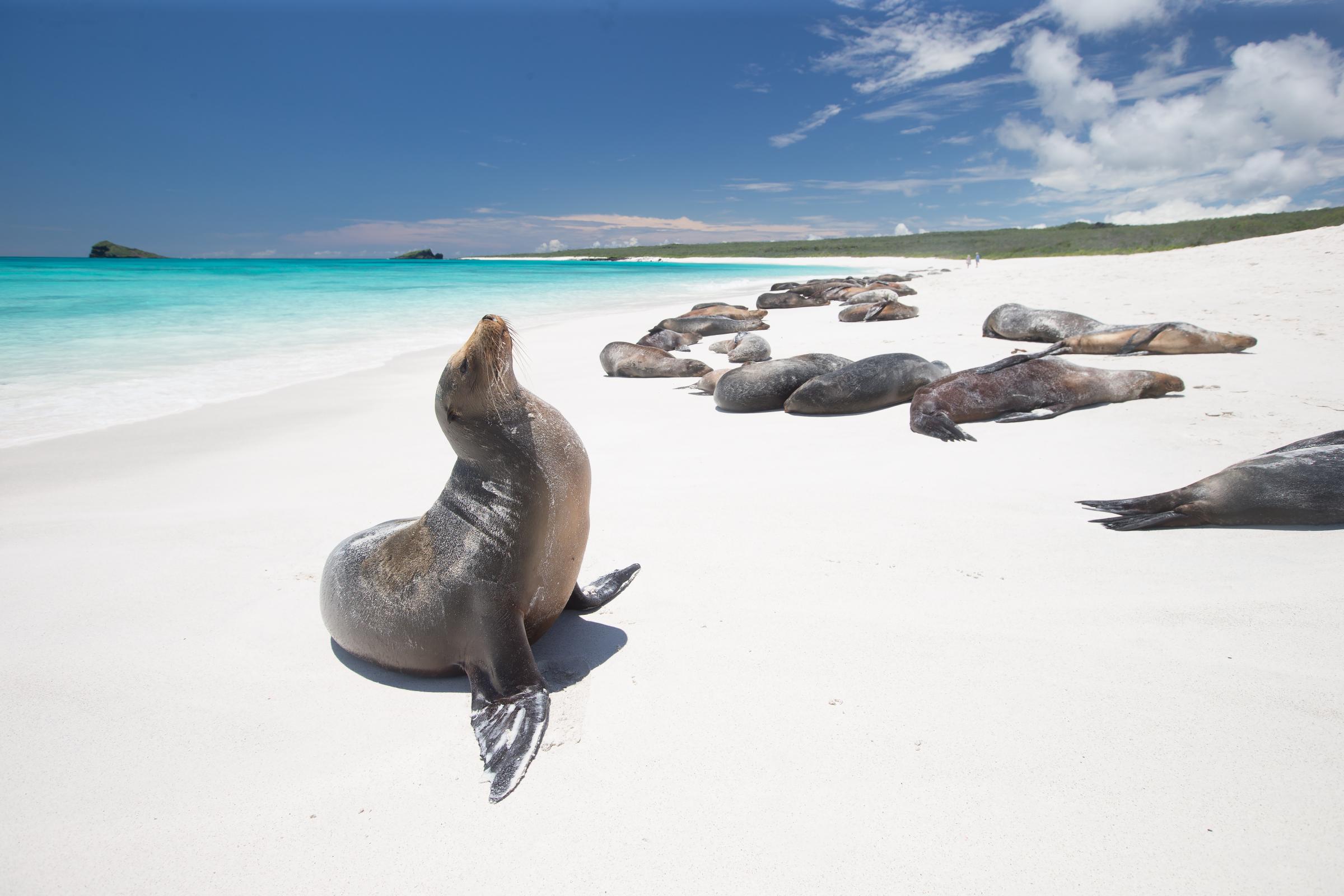
Ecuador’s Galápagos Islands continue to lure travelers 600 miles out into the Pacific. Where else can you watch a marine iguana dive for seaweed, with a blue-footed booby circling overhead, or size up short-feathered penguins darting along the equator? Follow in the footsteps of Charles Darwin, who famously explored the area in 1835: there’s prime animal viewing on the largest island, Isabela, which is home to 70 percent of the archipelago’s wildlife. Here, you can visit a tortoise breeding center and snorkel with gentle sharks. Isabela also has the region’s best beach, in the little-known Puerto Villamil, where you’ll spot a variety of marine animals. Cruising remains the best option, and most boats—like the 100-passenger Silversea Galápagos from Silversea Cruises—pair travelers with naturalists. The new carbon-neutral Pikaia Lodge, home to a giant tortoise reserve, is pioneering a hybrid land-and-sea-based experience. The lodge pulls out all the stops: floor-to-ceiling windows, private terraces, and a spa.
Cape Town

With its windswept beaches and dramatic Table Mountain backdrop, Cape Town has a wild beauty and elegance all its own. The unique setting on South Africa’s coast has also given rise to a diverse culinary culture: no city captures global food traditions quite like it. At colorful markets, haute gastronomic temples, and beachside shacks, you can revel in the multicultural cuisine.
Provence
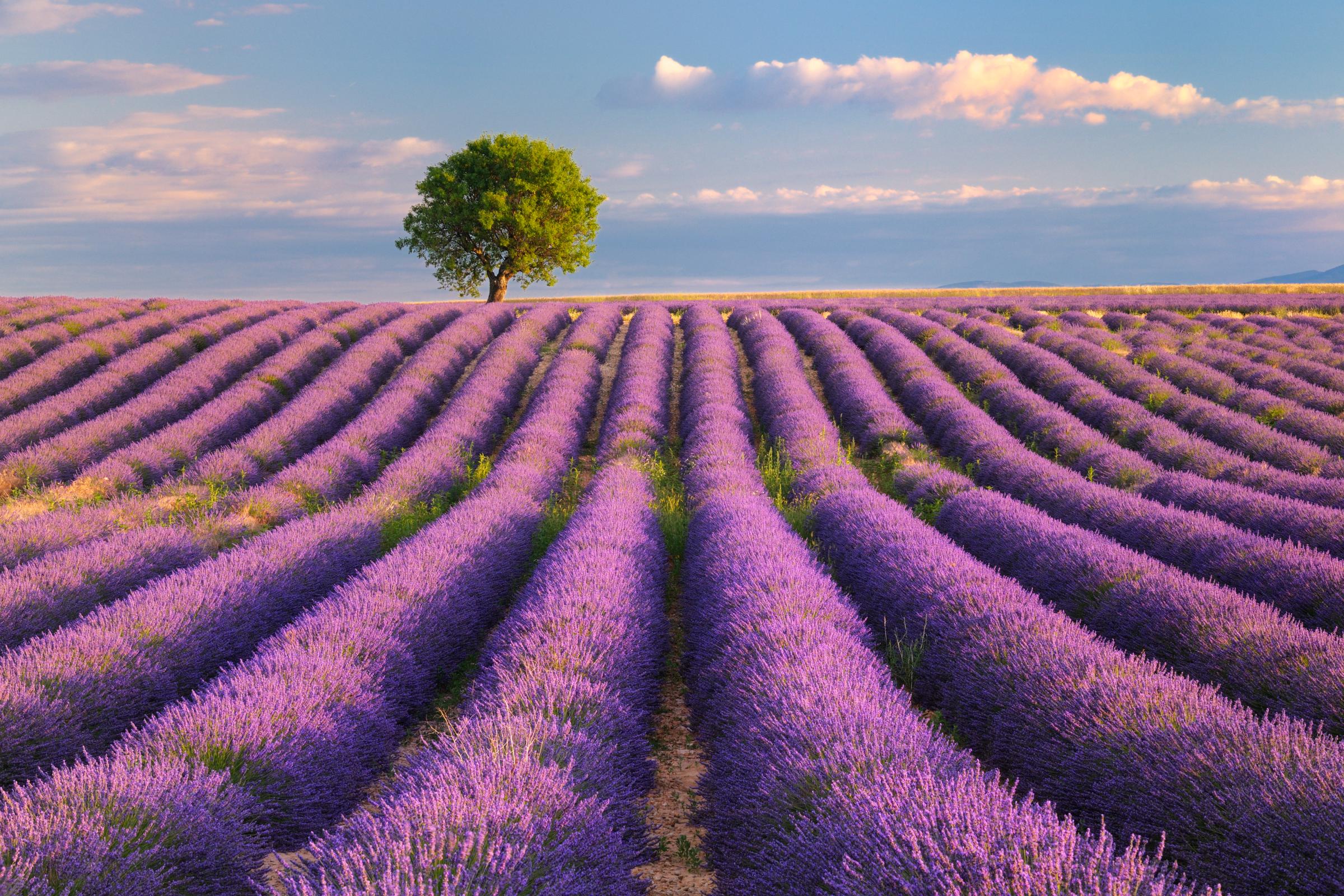
This region of southeastern France is filled with lavender fields, sleepy fishing villages, Roman ruins, and so many scenic vistas it’s hard to know where to point your camera next. This is also the place for some of the country’s best antiques shopping, wine tasting, and dining—whether at a family-run mas (farmhouse) restaurant, a Michelin-starred temple to haute cuisine, or a DIY picnic of Provençal staples from a local farmers’ market. Among the activities not to miss: a tour of the small resort towns and fishing villages on the Cap d’Antibes; browsing antiques from the dealers along Avenue des Quatres Otages, in L’Isle-sur-la-Sorgue; and throwing back oysters, sea urchins, and white wine with the locals at the fishmongers’ stands at the entrance to the Marché à la Brocante, in Villeneuve-lès-Avignon. Skip the formality of a hotel and rent a villa from Hosted Villas, which has houses that come complete with tips on, say, the best places to eat or the ideal times to visit the market.
Egypt
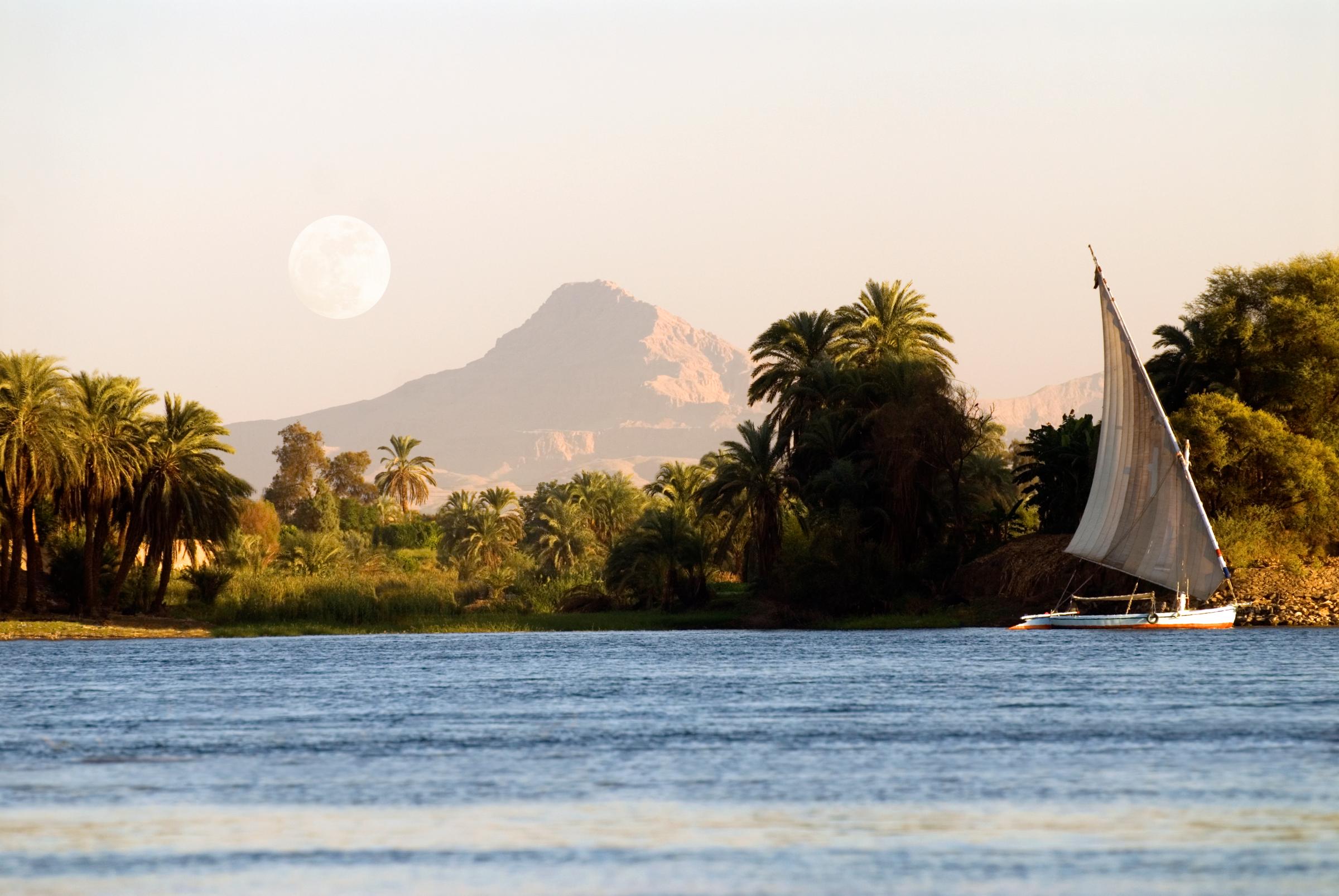
A journey through Egypt’s ancient marvels begins 14 miles outside of Cairo, with a visit to the Pyramids of Giza, which date back 4,500 years. Stay the night at the Four Seasons Hotel Cairo at Nile Plaza, a luxurious hideaway with three swimming pools, before hopping a 90-minute flight to Aswan, where you’ll board the steamship Sudan (five-day itineraries from $800 per person). Like most boats that ply the Nile River to Luxor and back, it stops at the temples of Edfu and Kom Ombo before heading to Karnak, a 2,000-year-old city built by the great pharaohs. Luxor, which usually marks the end of a northern-bound cruise, is the gateway to the Valley of the Kings, home to ancient tombs. Unwind at the Hotel Al Moudira, designed after an Arabian palace.
Myanmar
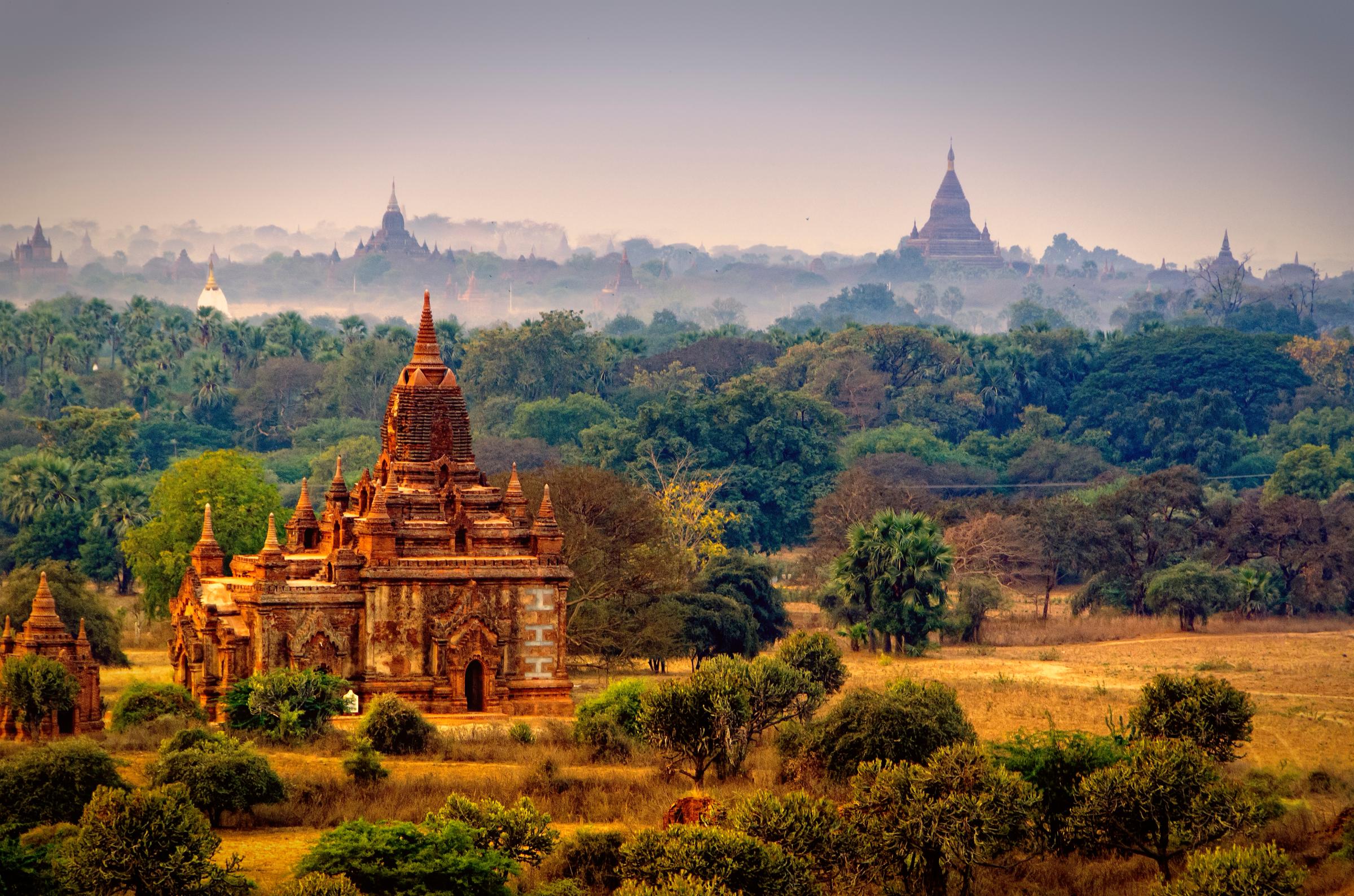
This is a nation on the cusp of great change, and there’s never been a better time to go than right now, before it loses the look of old Asia. Yangon, the country’s largest city and once a key port in the British Empire, is lined with colonial-era buildings. Here, you’ll see Shwedagon Pagoda, among the holiest sites in Myanmar. Its central stupa is covered in gold—not gold leaf, but thick plates of gold. Stay at the Belmond Governor’s Residence, a 1920s mansion set in the leafy embassy district, and eat at local favorite Feel, which serves excellent noodles. The life of the country truly unfolds along the rivers, so opt for a cruise between Yangon and Mandalay, the last royal capital of the former Burma. AmaWaterways’ new AmaPura offers 10-night sailings with excursions to Salay’s teak monasteries and the Mahamuni Buddha.
Petra
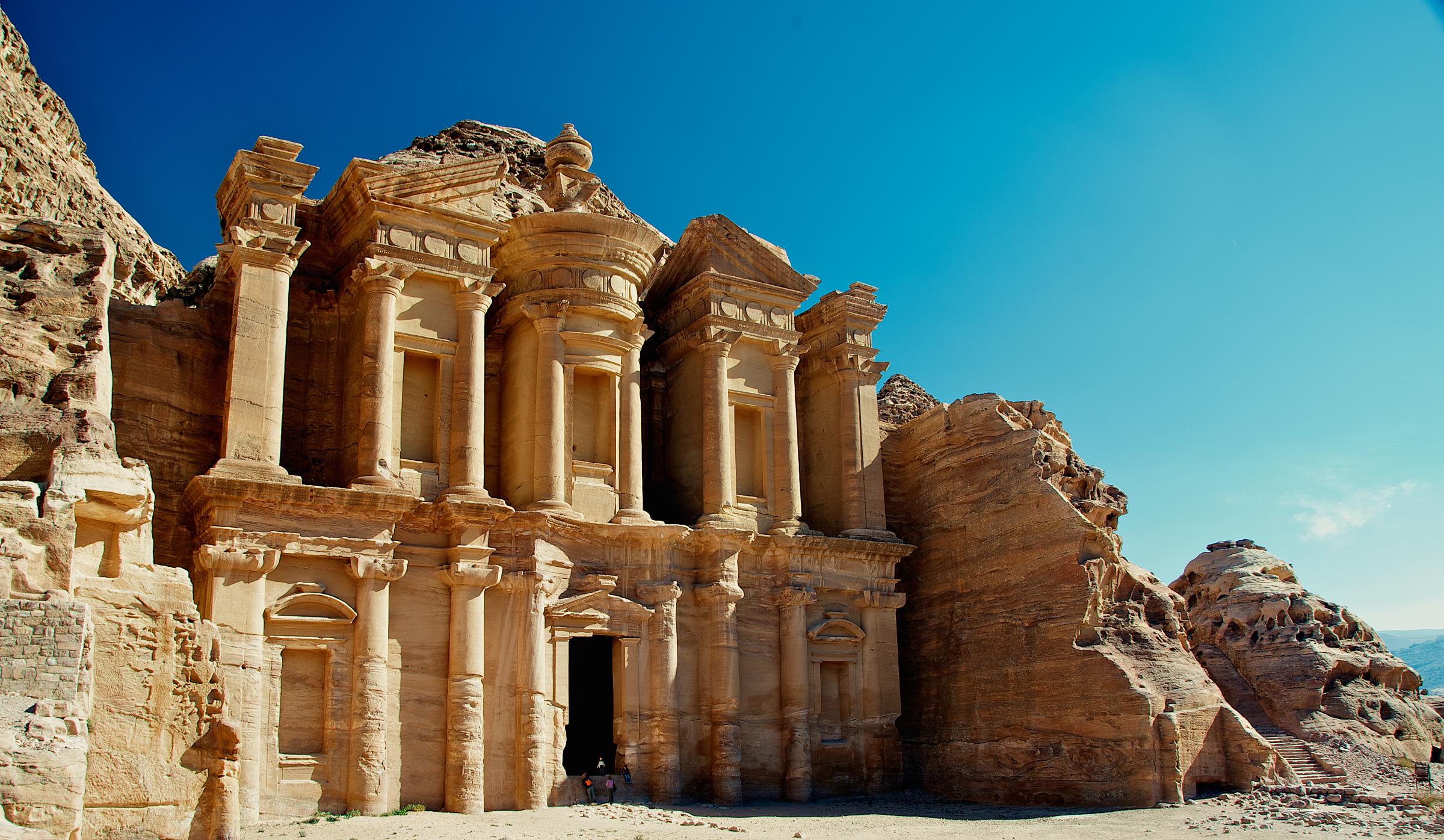
After the 2,300-year-old “lost city” in Jordan played a cameo role in 1989’s Indiana Jones and the Last Crusade, tourism exploded from just a few thousand visitors per year to more than half a million today. It’s easy to follow Indy’s footsteps through the Siq, a slot canyon that leads to the Treasury building (its pediments and columns were hewn by hand out of a cliff). But the 400 square miles of desert that make up the Petra Archaeological Site are filled with other dazzling monuments, including a Roman-style amphitheater, cave dwellings, and a massive colonnaded structure called the Monastery, which sits atop a high peak. It’s a steep hike up, so hire a horse or donkey and a guide, who can explain Petra’s history. And start out early to avoid the afternoon heat (and crowds). Stay at the Mövenpick Resort Petra, which has a pool and a prime location just outside the site entrance, and consider tacking on a few days at the Evason Ma’in Hot Springs, an oasis-like resort 3½ hours away.
Zambia Safari

Zambia is Africa’s great unsung safari destination and unquestionably its best value. Elephants, leopards, crocodiles, hippos, giraffes, antelopes, chirping tree frogs—you name it, Zambia has it, along with superb local guides. And the parks offer a range of experiences seldom combined elsewhere: canoeing, fishing, boat rides, night drives, and, not least, walking safaris, a concept pioneered in Zambia’s South Luangwa Valley by the late naturalist Norman Carr. Experienced Africa hands will appreciate the diversity, but the country also makes a fine introduction for first-timers. Much of its authenticity derives from the lodgings. While big-name safari companies have made inroads, the field is still defined by intimately scaled river lodges and bush camps, many of them founded and operated by Zambians—people like Andy Hogg, who started the Bushcamp Company, a collection of seven well-appointed camps that includes Chamilandu in South Luangwa National Park. There’s also Grant Cumings, whose family runs two beloved properties: Chiawa Camp and Old Mondoro, in Lower Zambezi National Park.
Tokyo

When it comes to Asian megalopolises, Tokyo falls into a category of its own: few cities offer such a dizzying array of restaurants (more than 80,000), luxurious lodging, vibrant nightlife, and legendary shopping, all set against a rich cultural backdrop. Don’t wait until the 2020 Summer Olympics to go.
Lake Como
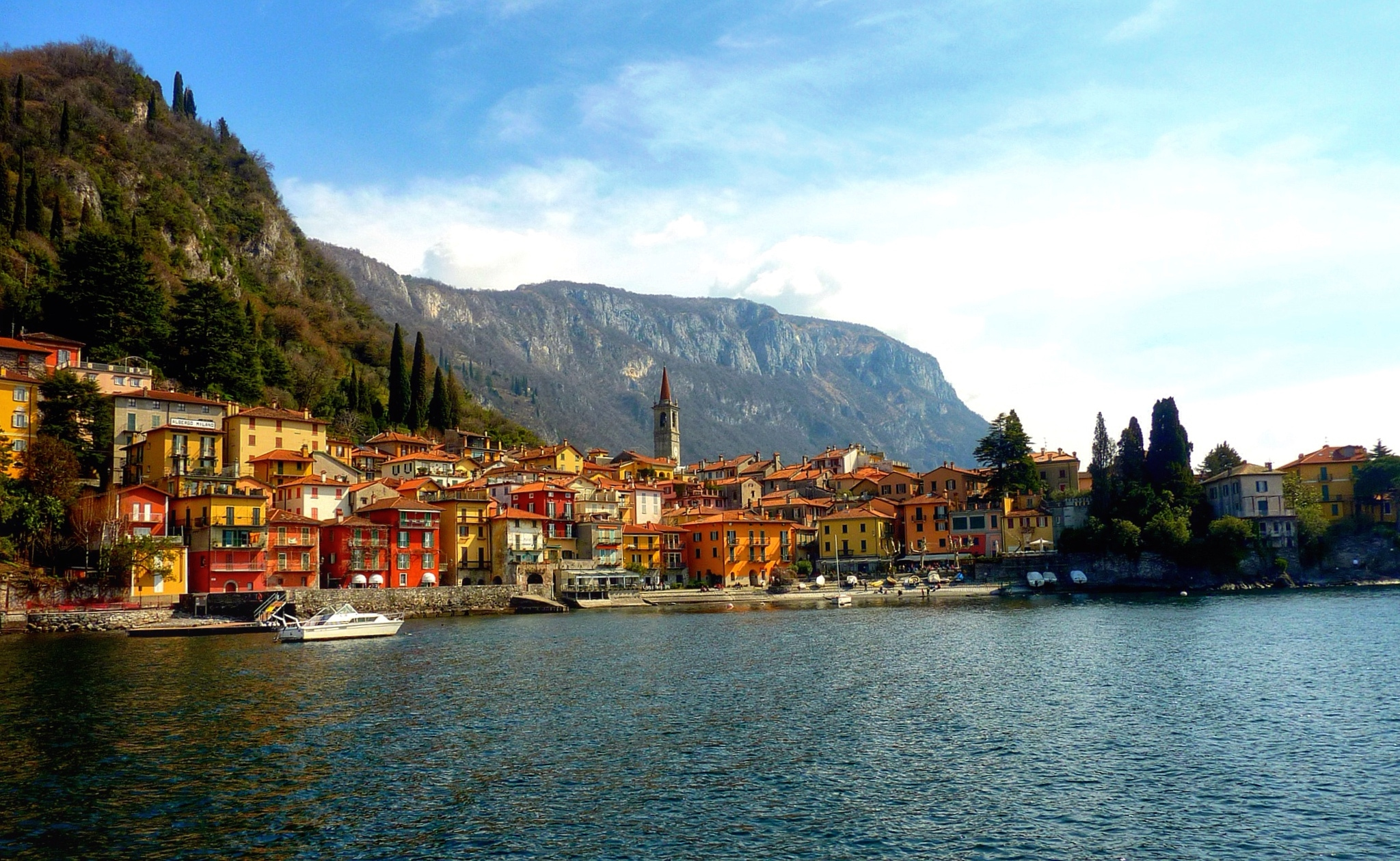
Celebrity residents like George Clooney and Richard Branson have only upped the profile of Como, Italy’s most glamorous lake since the days of the Grand Tour. Its 30-mile-long western shoreline runs from the miniature sailing port of Cernobbio through sleepy Laglio to Menaggio. The most prestigious of the waterfront hotels, Villa d’Este, in Cernobbio, attracts the jet set with its 152 opulent rooms (silk brocade curtains, antiques) and dramatic floating pool. For something more affordable, there’s Palazzo del Vice Re, a five-room hotel in Lezzeno.
Bhutan
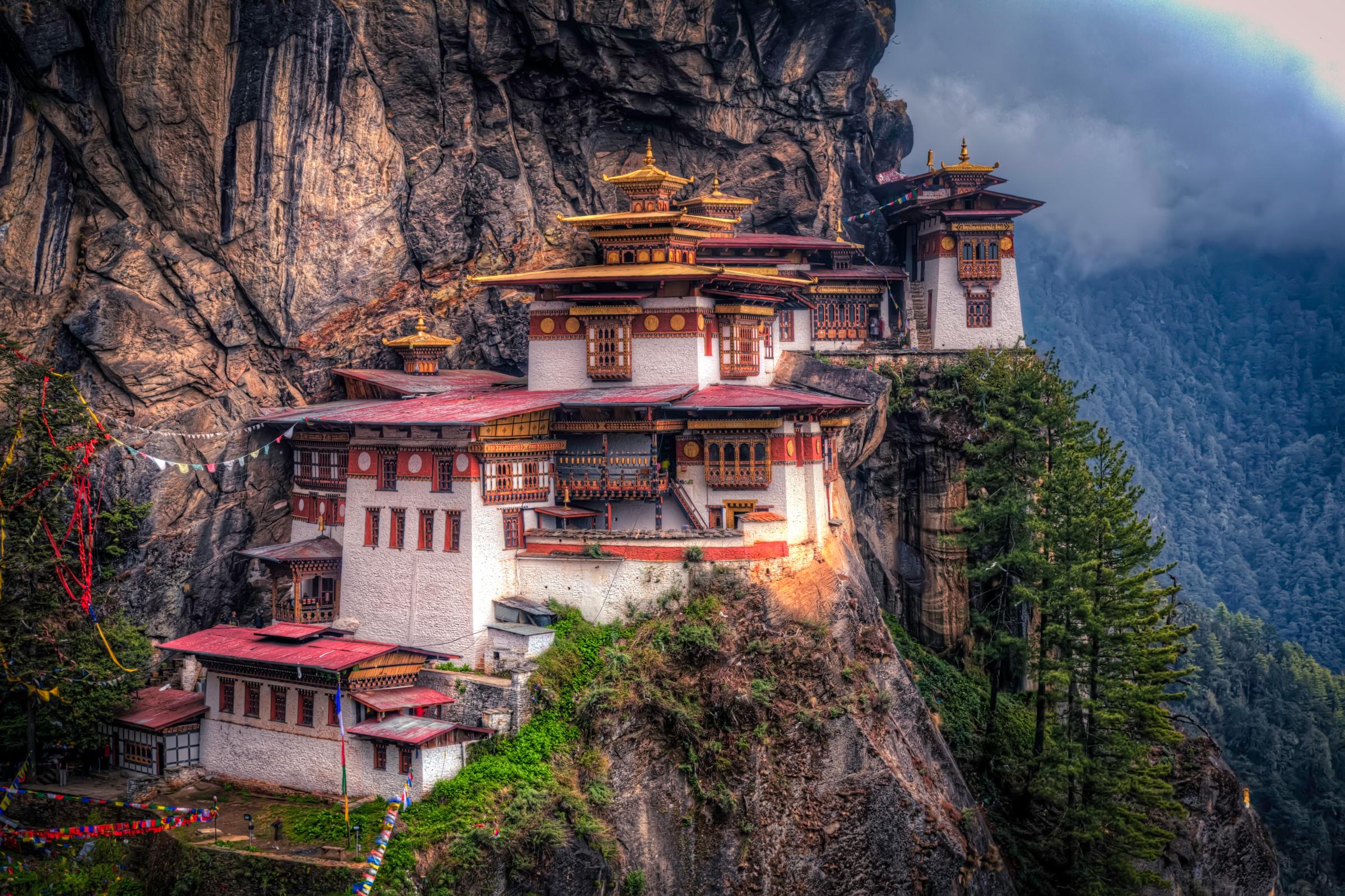
Though it opened to outsiders in 1974, Bhutan, with its pristine landscapes and well-preserved Buddhist temples, didn’t start receiving luxury-seeking travelers until about a decade ago, when high-end hotels started opening in the bigger cities of Paro and Thimphu. A more recent debut is the Gangtey Goenpa Lodge, overlooking the Gangtey Valley. Taking its cue from the 17th-century monastery a quick walk from its front door, the property slips discreetly into its remote hillside location. The floor-to-ceiling windows in the main lounge frame a spectacular vista; soft leathers bring warmth to the 9,000-foot elevation, as do individual fireplaces in the 12 guest rooms. Ask the concierge to arrange a private balloon ride for a bird’s-eye view of the glacial valley. You also don’t want to miss some of the country’s most spectacular landmarks, including the Takstang (Tiger’s Nest) Monastery. Precariously situated on a rock outcropping some 2,600 feet above the Paro Valley, Tiger’s Nest is built around a cave where the Indian guru Rinpoche meditated in the eighth century. Today, visitors reach the monastery after a two-hour climb that is not for the faint of heart.
Montana
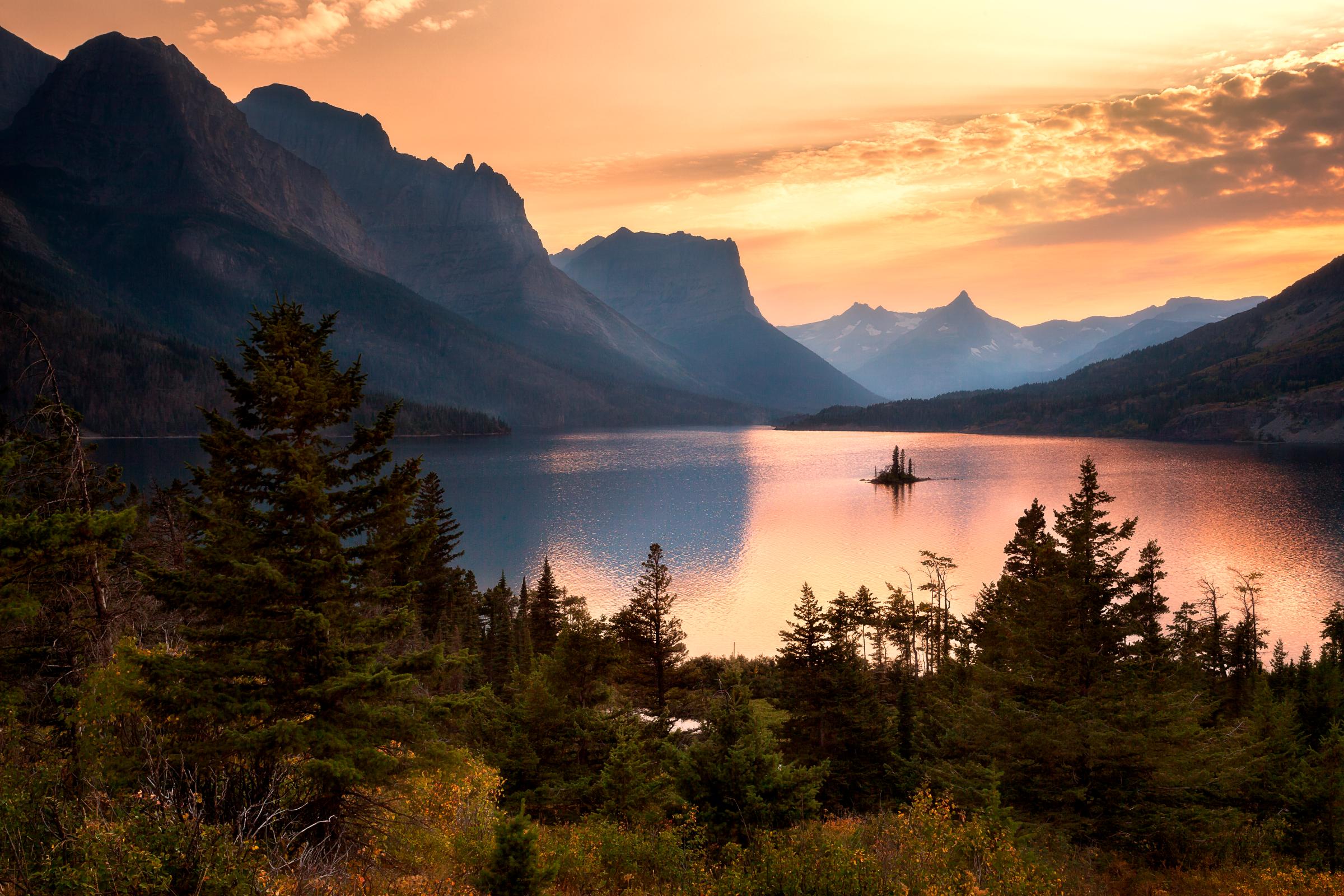
Deep in the Montana wilderness, on 37,000 timbered acres overlooking the Blackfoot River Valley, the Resort at Paws Up is outfitted for lovers of the outdoors. With 28 luxuriously rustic vacation houses and 30 tricked-out tents for “glamping,” the compound supplies plenty of adventure, including snowmobiling, fly-fishing, clay shooting, and horseback riding. Expect a meat-heavy menu and he-man portions at the main restaurant, and a full-service spa that even offers canine massage. In Philipsburg, the beautifully appointed Ranch at Rock Creek is set on a 10-square-mile property where in the winter months you can build an igloo or take a sleigh ride with a hot chocolate in hand. When the weather warms up, there’s fly-fishing, skeet shooting, or western-style riding on one of the property’s 66 horses.
Bali
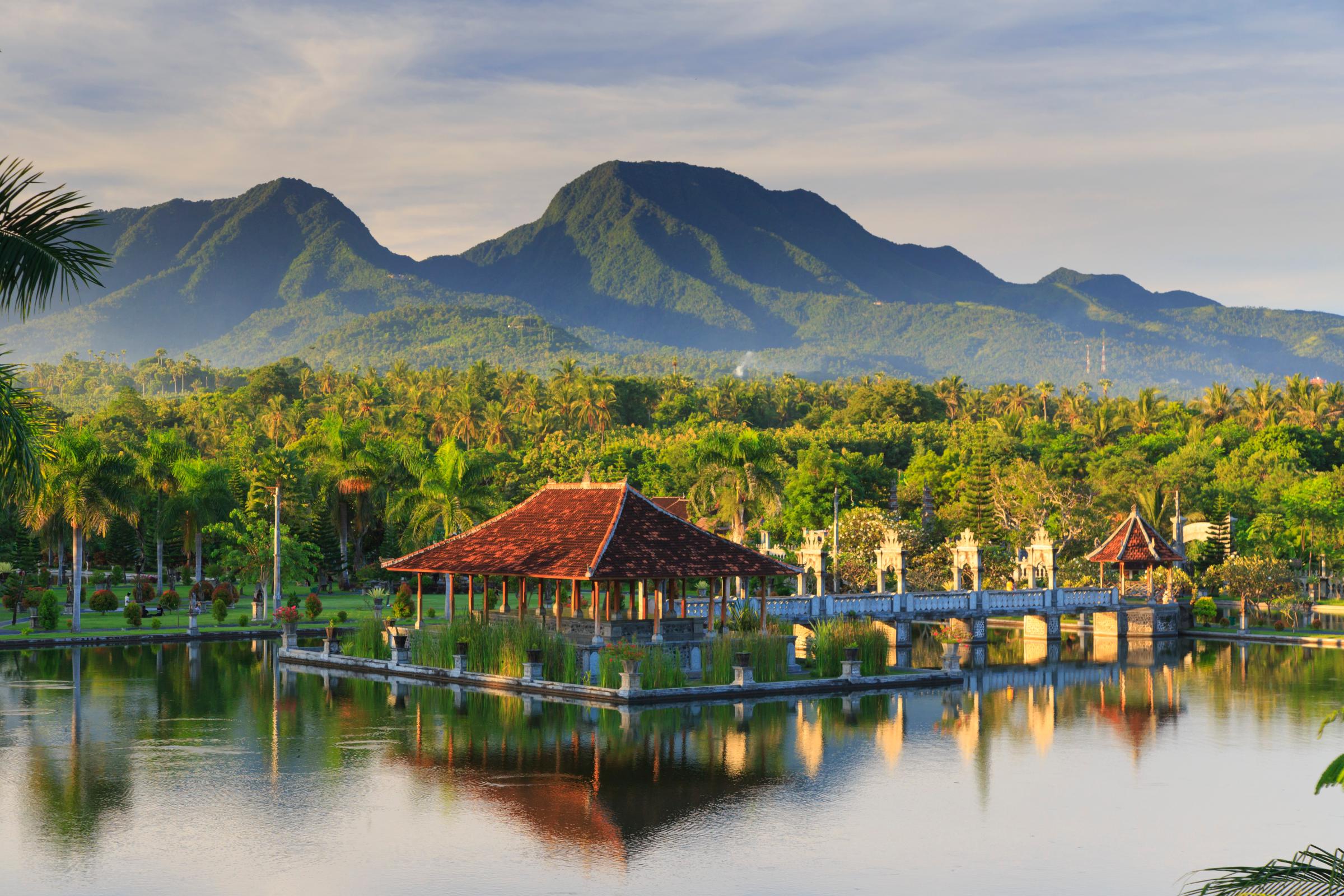
Bali is but one of the 17,500 islands in the Indonesian archipelago and, even among its colorful neighbors, it stands out for its lushness, vibrant culture, and spectacular resorts. The original pioneer is Amandari, set along the Ayung River gorge outside Ubud and laid out like a traditional Balinese village. The thatched-roof villas are each set inside a stone-walled compound. Pebbled pathways thread past lotus ponds and flower gardens; rice paddies cascade down the hillside to the river below. As secluded as it is, the resort welcomes locals to pass by on a public footpath, baskets perched on heads, as they make their way to the riverbank.
New Zealand
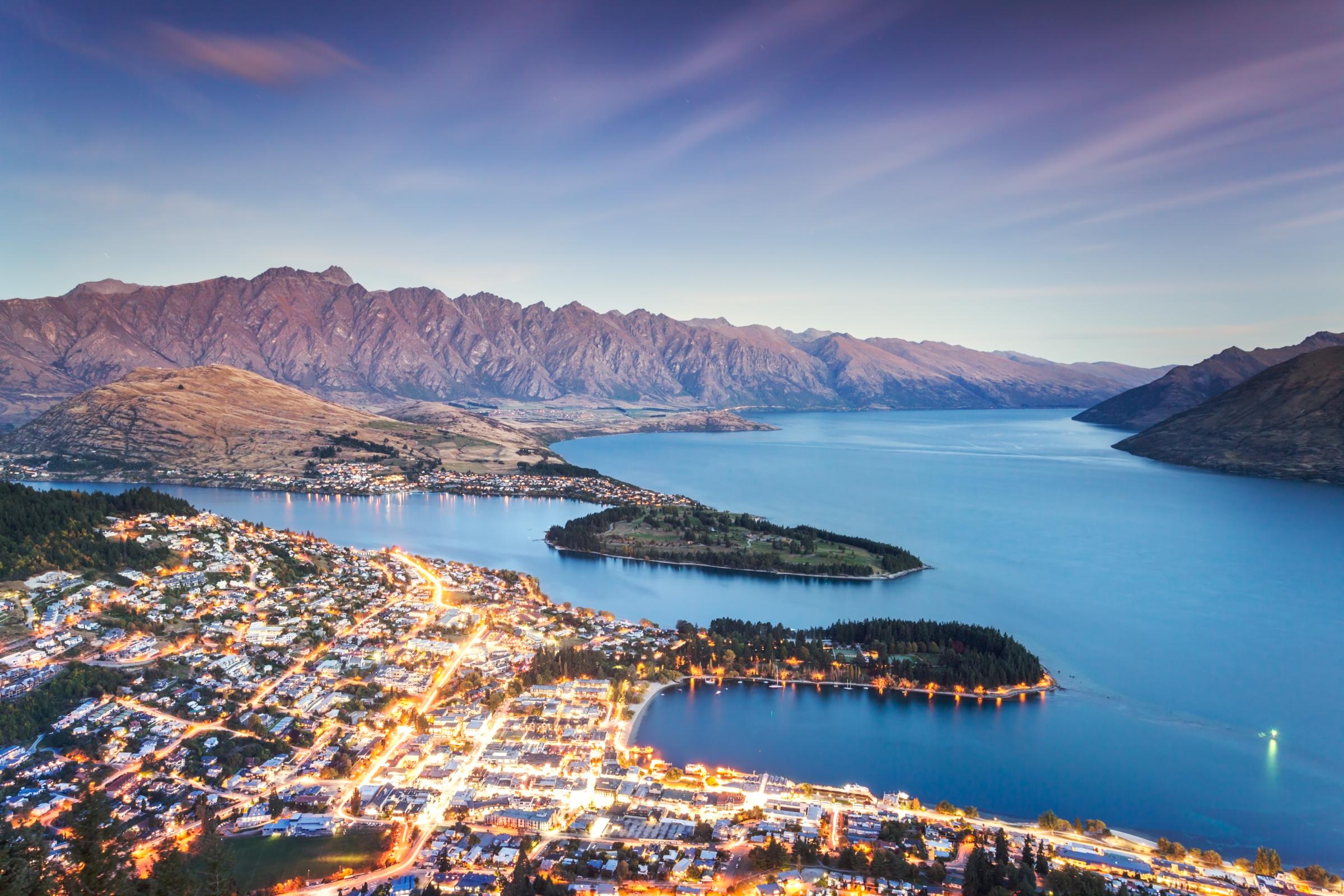
Known for its vineyards and outdoor adventures, New Zealand also offers more urbane pleasures. This trip combines the best of city and country on the North and South Islands.
Days 1–3 Nearly a third of the nation’s 4.5 million live in Auckland, a stylish city on the North Island. Stay at the Hilton, which overlooks Waitemata Harbour, and have a sushi lunch at Ebisu. A 35-minute ferry ride will take you to Waiheke Island, where you can rent a moped or car at the landing and cruise from beach to beach.
Days 4–5 Outside the city, it’s a big-sky, small-world place. Head south on the Thermal Explorer Highway past rolling hills to the Hawke’s Bay wine region, where Black Barn Vineyards has an art gallery, a restaurant, and lodging. Fifteen minutes away, you’ll find Elephant Hill, another winery serving meals along the coast. Outdoor tables here have a view of a thin ribbon of blue sea. Back on Highway 2, continue south four hours to Wellington, the capital, where the intimate Ohtel is around the corner from Whitebait, the perfect spot for oysters.
Days 6–7 From Wellington, hop the ferry to Picton on the South Island and drive four hours south to Christchurch, the island’s largest city. It’s worth the journey for seafood at Fiddlesticks. An hour farther south, Akaroa is the only former French settlement in New Zealand. There are street names in French and charming sidewalk cafés. After taking in the town, spend the night at the nearby Kokopu Estate, which has two lovely cottages and a room for rent.
Rajasthan
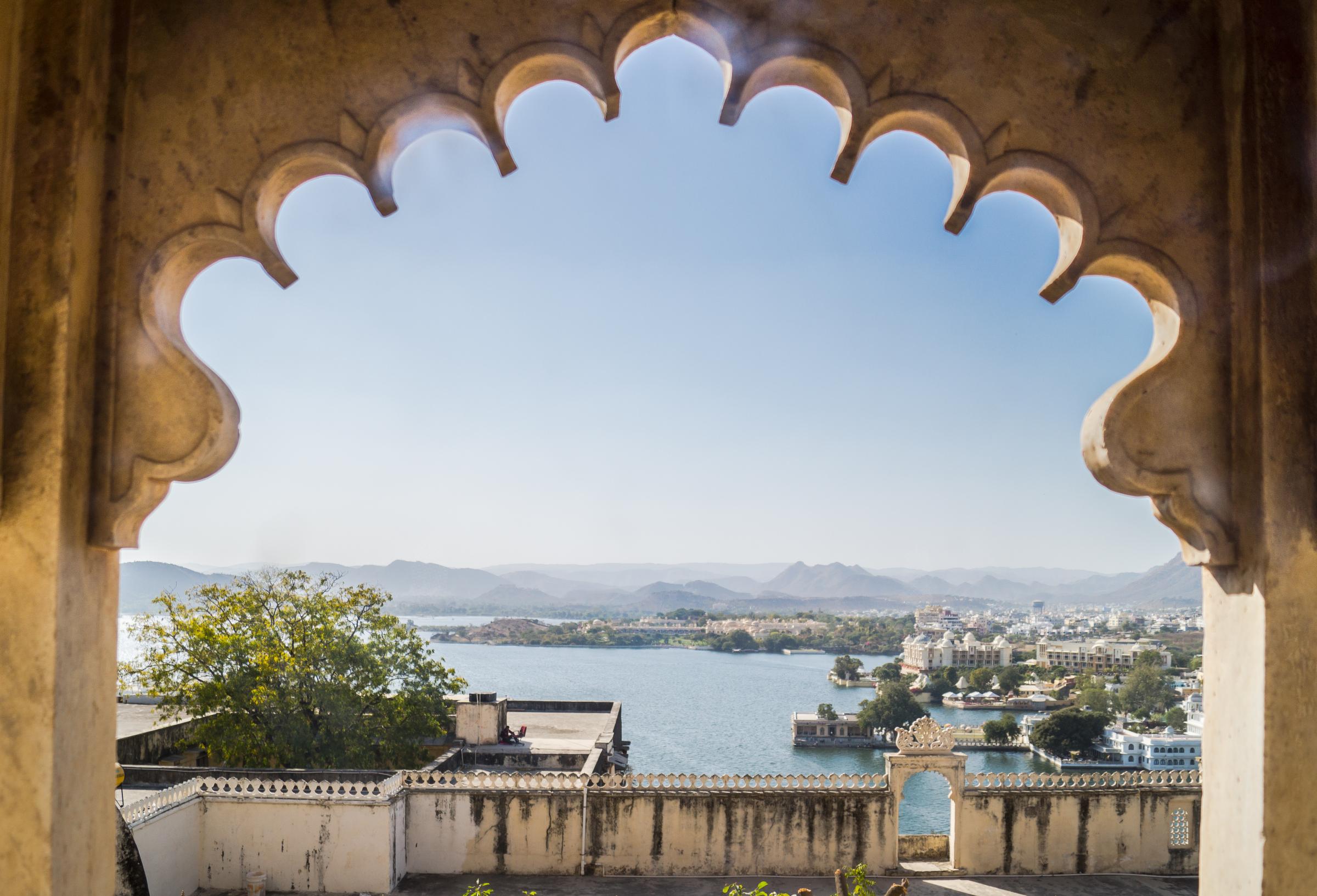
A magical land of palaces and temples, India’s largest state holds the keys to the country’s most glamorous past. Jaipur, the region’s storied capital, is a strong shot of color and history: it has the 16th-century Amber Fort, the lacy Palace of the Winds, and shops full of precious stones, including Royal Gems & Arts. West of Jaipur, Jodhpur is a 15th-century city famous for its massive sandstone Mehrangarh Fort and for its weddings in which revelers and elephants take over the streets (most are between September and January). The whitewashed city of Udaipur is built around four man-made lakes; a busy market encircles its Jagdish Temple. Check in to the Taj Lake Palace, where everything, from the private butlers to the foot massages, is over-the-top luxurious.
Petit St. Vincent
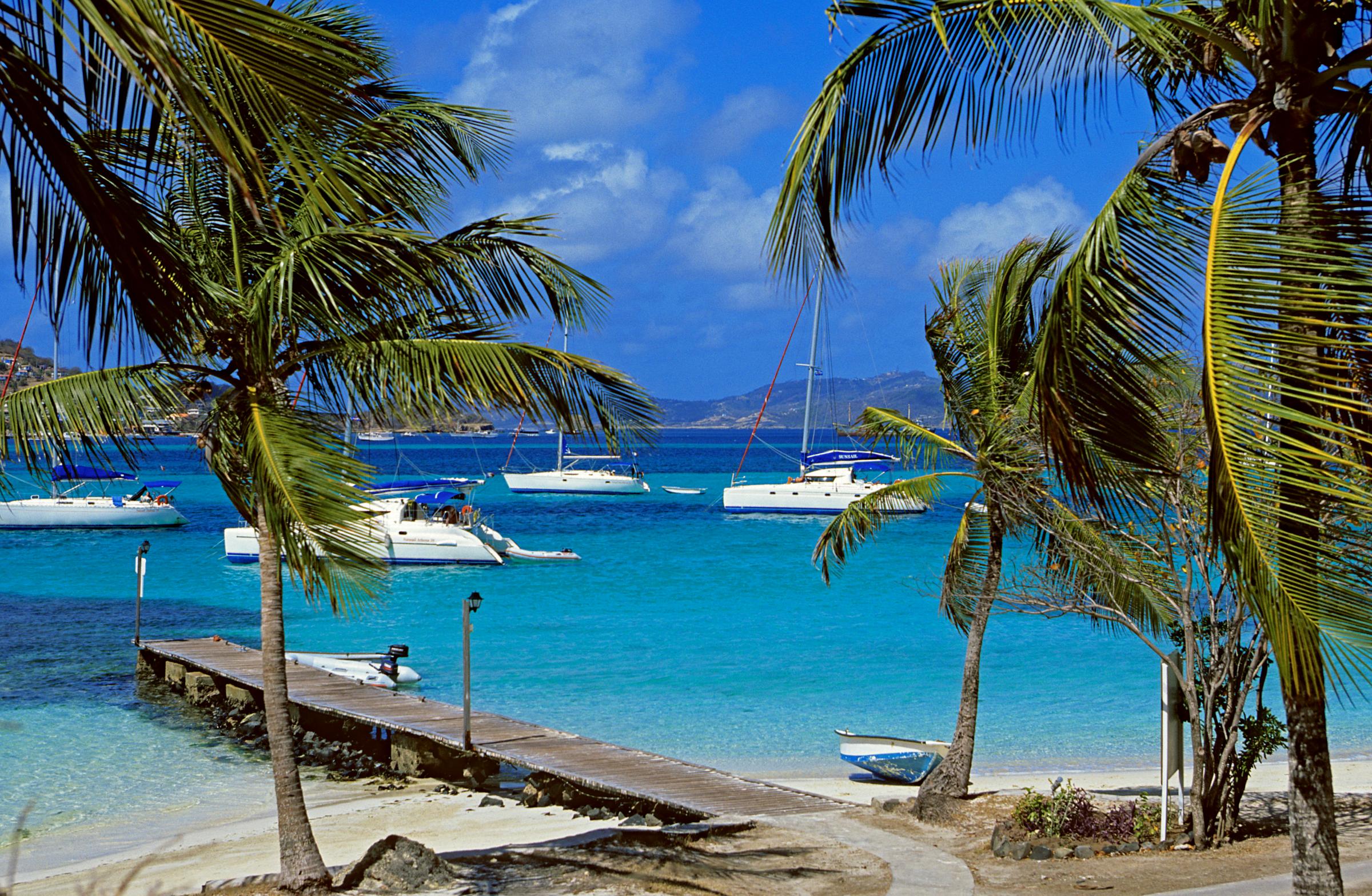
Though popular with the yachting crowd, the Grenadines have yet to be touched by mass tourism. Here, you’ll find one of the Caribbean’s most iconic resorts, a place that encourages disconnecting: Petit St. Vincent, a 115-acre isle with 22 stone-walled cottages that have no TVs, Wi-Fi, or phones. Driftwood palapas line the main beach, and there’s a hillside spa, where treatments like hot-stone massage are done in an open-air pavilion. The waterside restaurant and bar serves simple seafood—order a three-pound spiny lobster, fresh off the grill, and pair it with a bottle of rosé. Leave paradise one morning for a sail by sloop to the Crayola-bright reefs of Tobago Cays Marine Park with Captain Jeff Stevens.
Napa
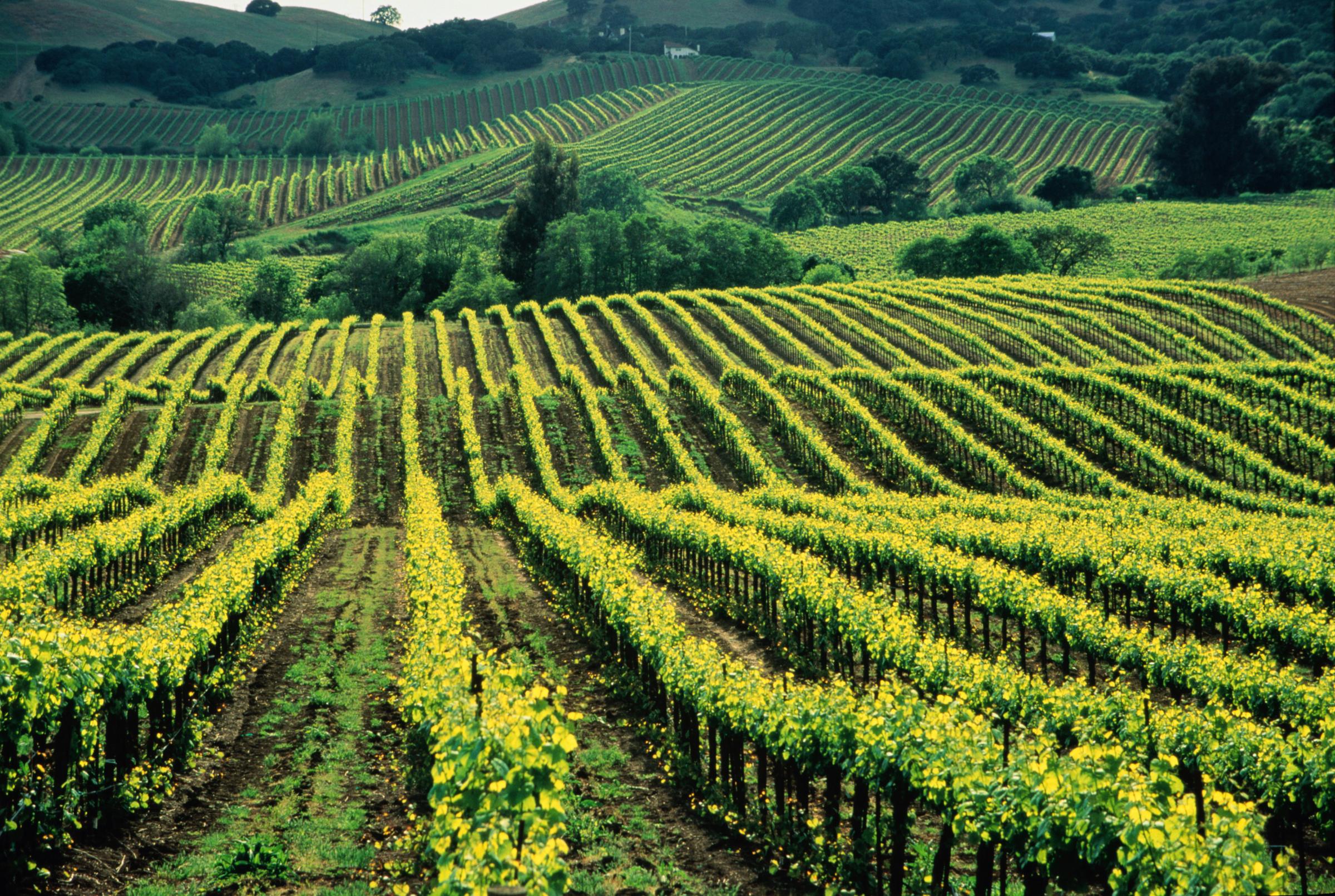
It’s hard not to be drawn to the picturesque hills of Napa Valley, California’s prime wine region, an hour north of San Francisco. Most visitors head straight for the vineyards, but don’t miss the town of Napa’s thriving restaurant and bar scene. Oenotri serves hearty southern Italian fare, while the Thomas turns out delicious flatbreads from its wood-fired grill. Base yourself at either the 250-acre Meadowood—which has a 12-room lodge, 20 cottages, and a Michelin three-starred restaurant, on the outskirts of St. Helena—or the region’s standard-bearer, Auberge du Soleil. Its recently redesigned Maison Saint-Tropez has eight romantic suites with hand-carved oak headboards and outdoor tubs. As for the vineyards, we love the newcomer Odette Estate Winery, set on 45 acres off the Silverado Trail. It has 18,000 square feet of caves and a living roof.
Amalfi Coast
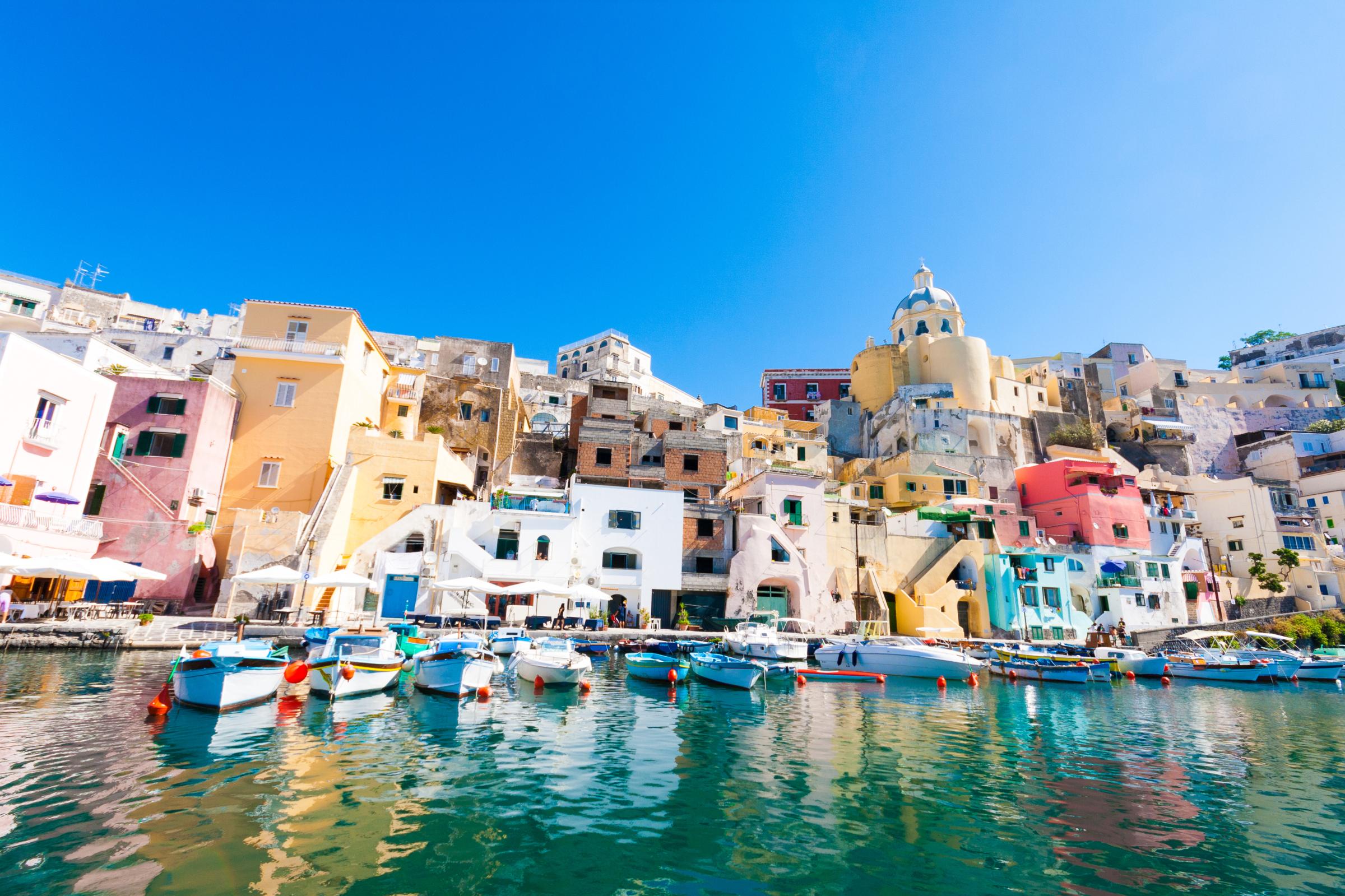
Dramatic limestone cliffs, deep green valleys, impossibly fresh seafood: the beauty of southern Italy’s Amalfi Coast is legendary. In Positano, pick from classic hotels like Le Sirenuse, with its decadent champagne-and-oyster bar, and Hotel Palazzo Murat, the summer residence of a 19th-century king of Naples. For a leisurely lunch, the family-run trattoria Lo Scoglio da Tommaso, in Massa Lubrense, serves addictive fritto misto and linguine alle vongole. In Amalfi, tour the intricately inlaid Arab-Norman Duomo and Moorish cloisters. It’s a short hydrofoil ride to the island of Capri, where you can check in to J.K. Place, a cliff-side villa with 22 rooms featuring nautical touches like porthole-style windows. Spend an afternoon at the glamorous La Fontelina, a beach club whose straw-thatched terrace overlooks the Faraglioni rocks. It’s also the ideal spot for frittura di paranza (crunchy fried fish).
Easter Island

You’d be hard-pressed to find a place more isolated than Easter Island, 2,237 miles from the nearest point in mainland Chile. It’s the setting of one of the world’s most mysterious marvels: moai, colossal statues that were each carved from a single stone sometime between1200 and the mid 17th century. Weighing up to 20 tons and reaching heights of up to 30 feet, the monoliths are fiercely guarded treasures among the Rapa Nui, a tribe that makes up more than half of the island’s population. Stay at Explora Rapa Nui, a LEED-certified lodge with 30 pine-and-concrete rooms designed to maximize privacy and Pacific Ocean views. Each evening, a guide helps you choose the next day’s activities: hiking, biking, fishing, snorkeling. But the best itineraries are those that take you to see the moai. In Ahu Tongariki, 15 of them stand atop a ceremonial platform with their backs to the sea. The Rano Raraku volcano, whose crater harbors a freshwater lake, is surrounded by moai in varying stages of completion. And Ahu Akivi is where you’ll find the only ocean-facing statues.
Istanbul
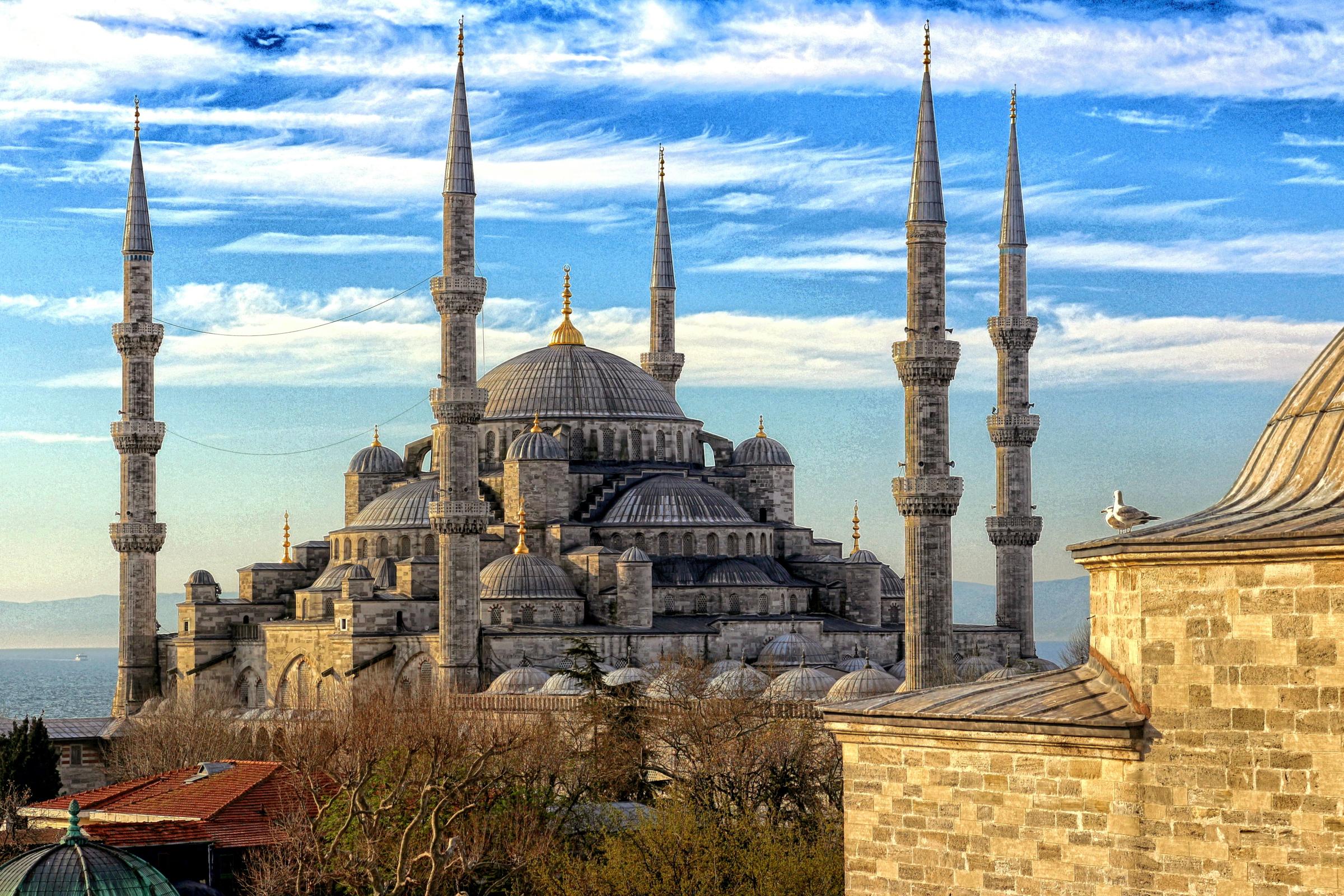
This culturally vibrant city on the Bosporus has been reinvented, thanks to a new breed of design-centric hotels and restaurants attracting a younger generation of visitors. But beneath the cosmopolitan gloss, an old-world food culture continues to thrive, with Ottoman-guild chefs specializing in kebabs, balik (fish), and böreks (flaky stuffed pastries). Then there are the meyhanes(rollicking drinking dens) like Karaköy Lokantasi, in the gentrifying Galata Bridge docks area. Here you’ll find locals sampling smoked octopus and cheese böreks alongside rivers of anise-flavored raki. And don’t miss the esnaf lokantas (lunch canteens) like Kantin Lokanta, in the Nişantaşi district, run by chef Semsa Denizsel, the Alice Waters of Turkey. Try the braised leeks with marinated green almonds and, at meal’s end, the Turkish coffee with a spoonful of mastic gum.
St. Petersburg
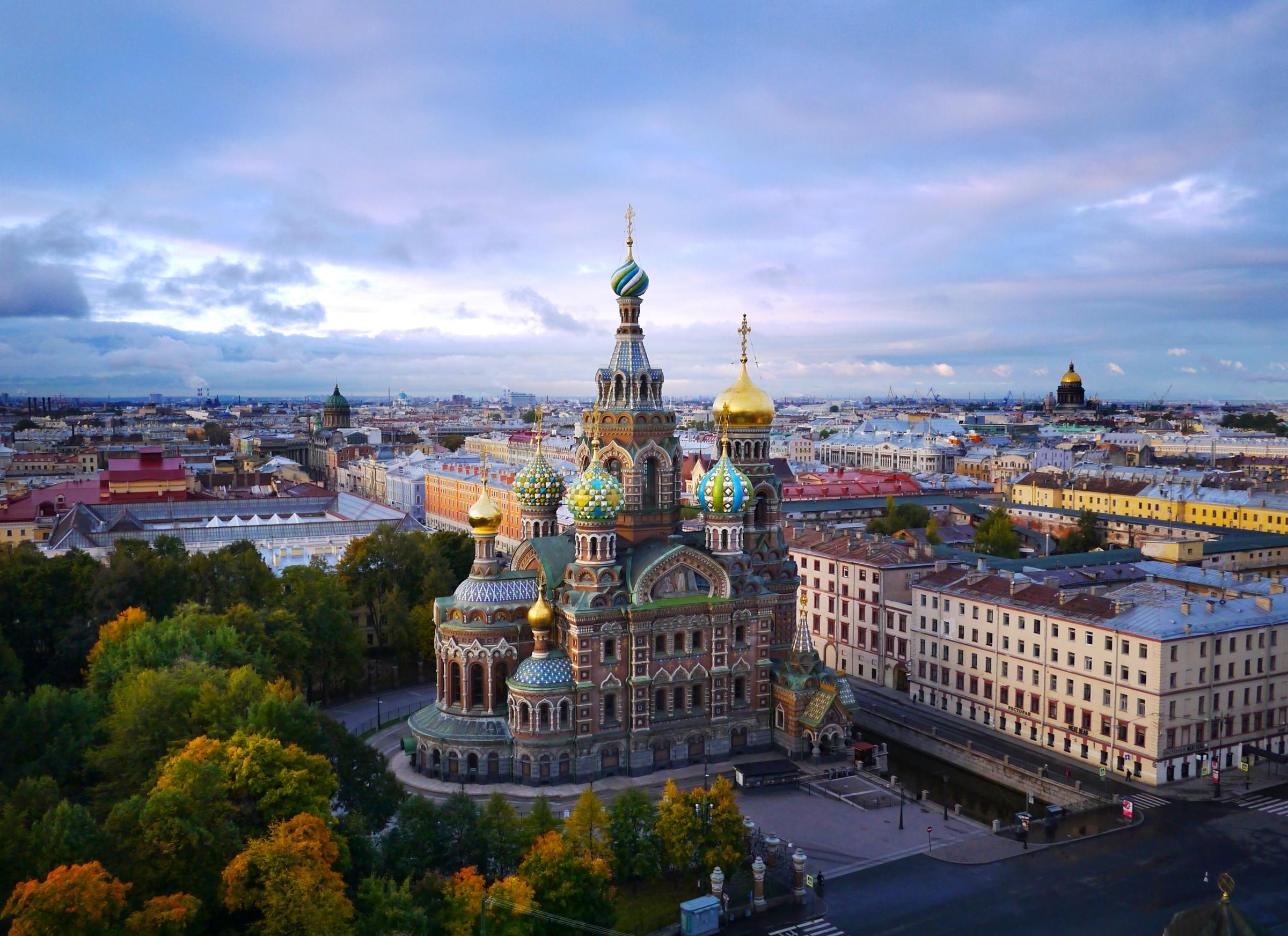
Russian czar Peter the Great imported Italian architects and French sculptors to build his 18th-century Enlightenment city. Today, his gilded churches, pale pink mansions, and the aquamarine Winter Palace are still reflected in the waters of the Neva River. Peter thought St. Isaac’s Square a bit lacking in style, so he had his friend Prince Lobanov-Rostansky build a grand yellow mansion with a white colonnade and marble lions out front. That structure is now the restored Four Seasons Hotel Lion Palace, and during the White Nights around the summer solstice, you can sit at the bar and sip vodka as clouds drift across an amethyst sunset sky. From the guest-room windows, the vibrancy of the city is in plain view—there are parties all night in bars on boisterous Rubinstein Street and on boats that cruise past New Holland Island, currently being redeveloped as a cultural center by oligarch Roman Abramovich.
Ireland
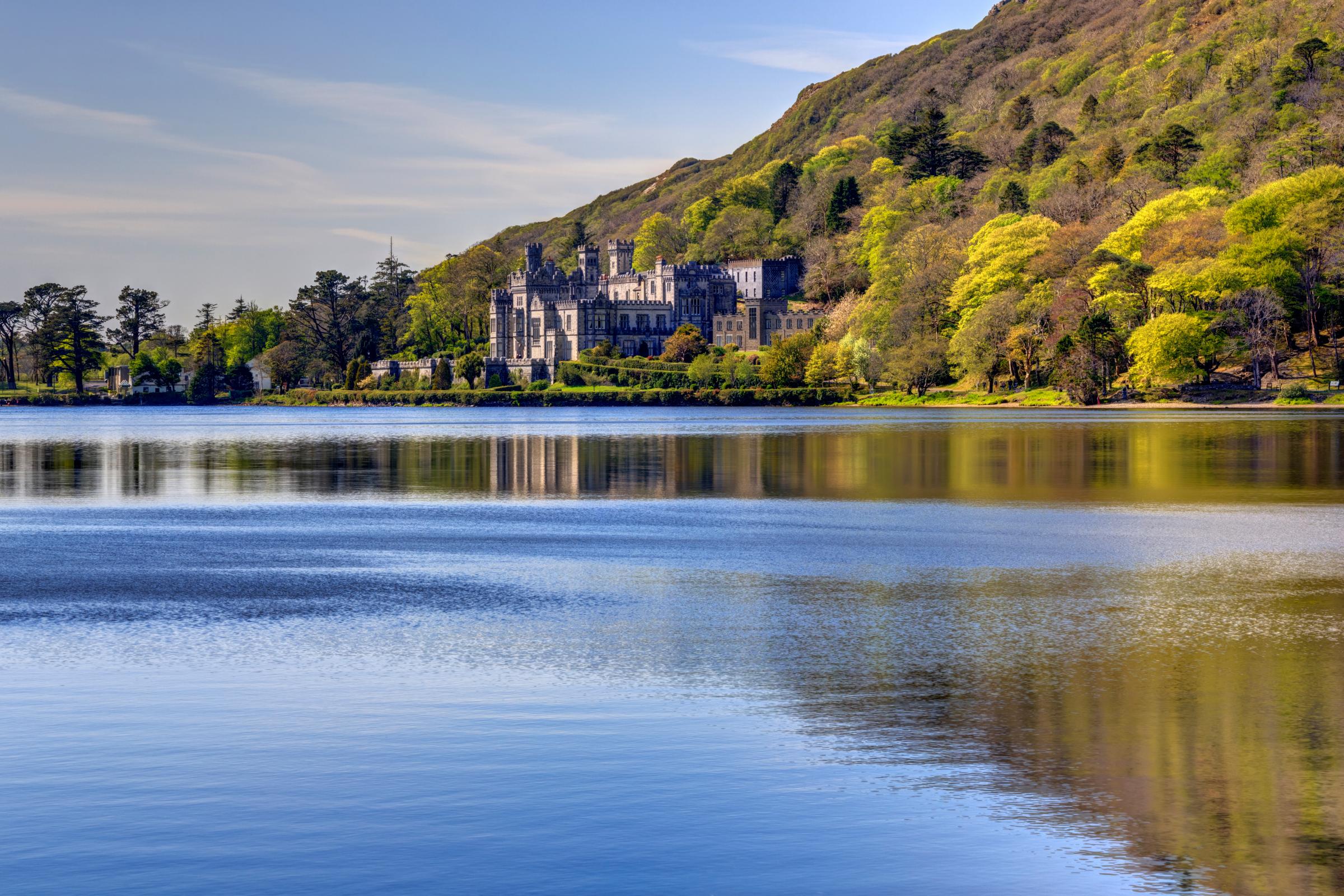
The far reaches of Ireland’s western and southern coasts have a raw, unmanicured grandeur that even the Irish concede demands a hardy soul. See it on this 10-day trip, ending in Dublin.
Days 1–3 Start in the south in Kinsale, a harbor village near Cork with a thriving culinary scene. Order a plate of local oysters or smoked salmon with thick brown bread at Fishy Fishy, and stay at the Perryville House, which has 22 comfortable rooms in the heart of town.
Days 4–5 Fringed by rugged cliffs, the Dingle Peninsula has gorgeous scenery. Dingle Horse Riding offers guided mountain or beach rides for all skill levels. Book a sea-view room at Dingle’s intimate Pax House.
Days 6–7 Home to farmhouses, crumbling stone walls, and emerald green hills, Connemara, on the western coast, has the largest concentration of Irish speakers in the country. For a luxurious base, Ashford Castle, a 12th-century turreted hotel close by, has 83 individually designed rooms, all recently renovated. There’s clay shooting, archery, and falconry on site, but save a day for a trip to nearby sites like Lough Inagh, one of Connemara’s most beautiful lakes, and Kylemore Abbey.
Days 8–10 End in the capital, where you can make a pub crawl in the Temple Bar district and shop Grafton Street. The Shelbourne, a Renaissance Hotel faces St. Stephen’s Green.
Patagonia
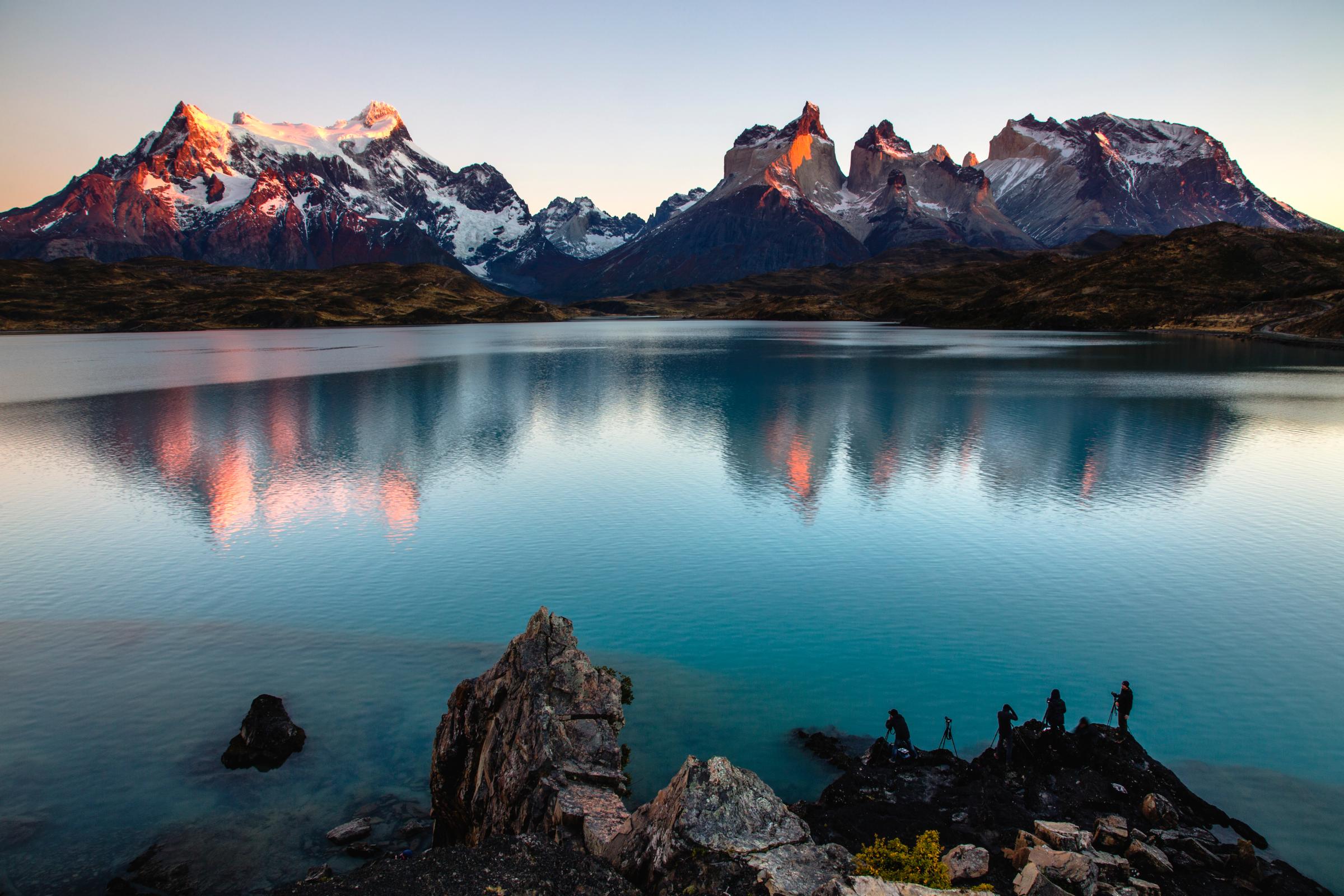
Patagonia has always been the land of the wanderer, the exile, the outlaw—souls drawn to a place where one can disappear into the sheer enormousness of physical space. The name alone conjures images of cloud-veiled peaks, electric-blue lakes, and endless steppes unpopulated for hundreds of miles. The best Patagonia experience combines the Argentinean and Chilean sides, including a stay at Estancia Nibepo Aike, a sheep and cattle ranch near El Calafate, Argentina. The experience of hacienda living includes hikes on the massive Perito Moreno Glacier. Across the border and through the Andes, Explora Patagonia is set within Chile’s Torres del Paine National Park and has a standout horseback-riding program (it’s the only hotel in the area with its own stables). You’ll canter with the cowboys across vast grasslands, and trade stories over maté. For something more architectural, Awasi Patagonia and the Singular Patagonia are newly built; both resorts offer guided park excursions.
Antarctica

An environmental preserve for scientific research, Antarctica is the coldest, windiest place on earth, with ice as deep as three miles and as old as 3 million years. To get there, you have to cross the Drake Passage, 600 notoriously difficult miles of ocean between the tip of South America and the icy continent. Functional but austere expedition vessels have been taking tourists there for decades; large, luxurious ships cruise there on occasion but passengers are not allowed to land. In 2013, for the first time, Seabourn sent the small Seabourn Quest, with a newly reinforced hull, to the continent. When not exploring the ice fields or visiting penguins—you may see tens of thousands at a time—you’ll learn all about the surroundings during daily briefings from the ship’s experts on history, geology, and wildlife.
This article originally appeared on TravelandLeisure.com
More Must-Reads from TIME
- Donald Trump Is TIME's 2024 Person of the Year
- Why We Chose Trump as Person of the Year
- Is Intermittent Fasting Good or Bad for You?
- The 100 Must-Read Books of 2024
- The 20 Best Christmas TV Episodes
- Column: If Optimism Feels Ridiculous Now, Try Hope
- The Future of Climate Action Is Trade Policy
- Merle Bombardieri Is Helping People Make the Baby Decision
Contact us at letters@time.com